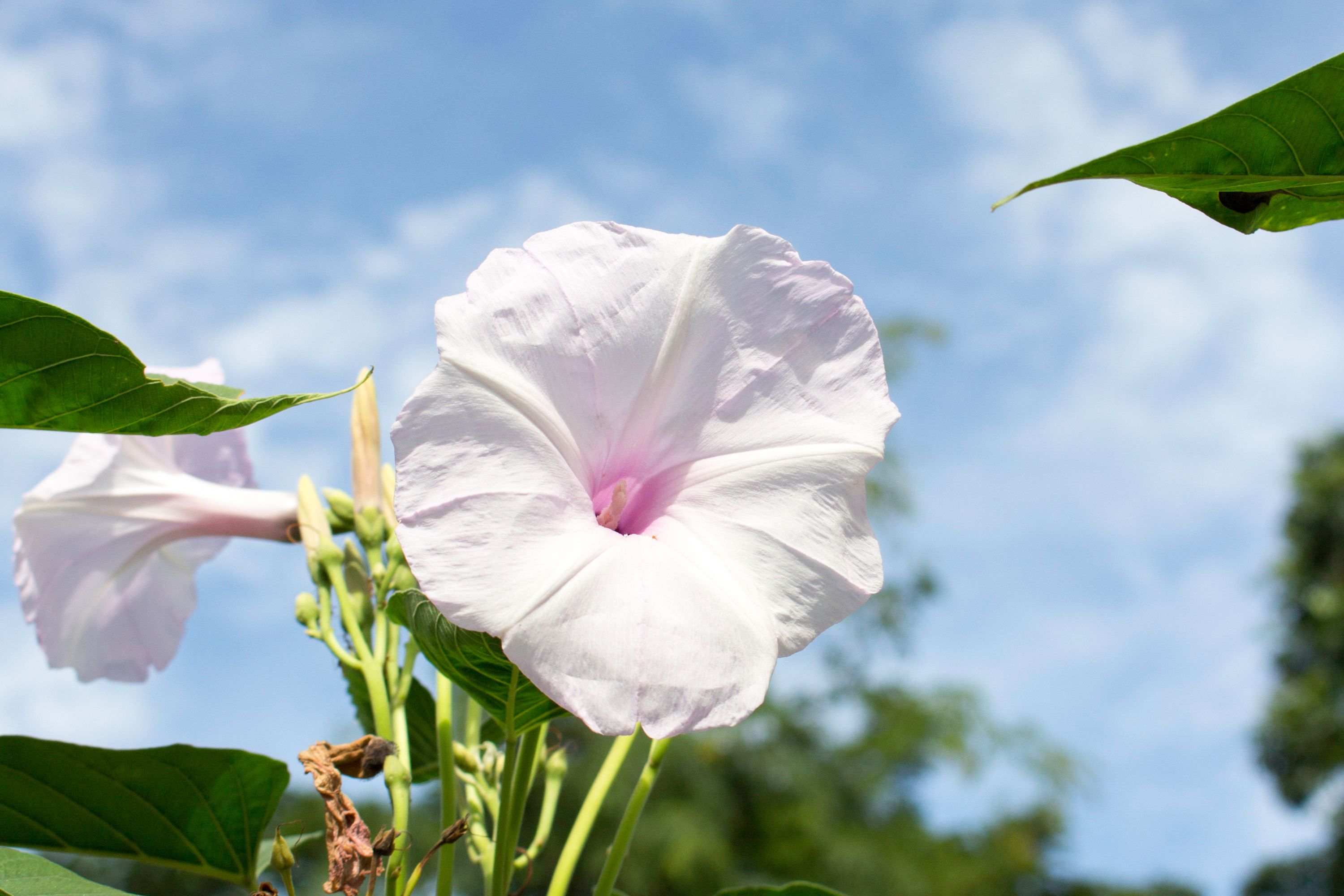Kangkong
(Ipomoea aquatica)

Description
Ipomoea aquatica, most widely known as kangkong (also spelled kangkung) or water spinach, is a semi-aquatic, tropical plant grown as a vegetable for its tender shoots. I. aquatica is generally believed to have been first domesticated in Southeast Asia. It is widely cultivated in Southeast Asia, East Asia, and South Asia. It grows abundantly near waterways and requires little to no care. Ipomoea aquatica grows in water or on moist soil. Its stems are 2–3 metres (7–10 ft) or longer, rooting at the nodes, and they are hollow and can float. The leaves vary from typically sagittate (arrow head-shaped) to lanceolate, 5–15 cm (2–6 in) long and 2–8 cm (0.8–3 in) broad. The flowers are trumpet-shaped, 3–5 cm (1–2 in) in diameter, and usually white in colour with a mauve centre. Propagation is either by planting cuttings of the stem shoots, which will root along nodes, or by planting the seeds from flowers that produce seed pods. The origin of I. aquatica is not quite clear, but it is generally believed to be native to Southeast Asia and was first cultivated there. This is supported by phylogenetic studies, its ideal climatic conditions, and the number of native pathogens in the region; as well as its predominant cultivation range, the prevalence in usage as food and traditional medicine, and the number of distinct native names in Southeast Asian languages. Several sources have also cited China or India as the location of the plant's domestication. However, these claims have no supporting evidence other than the appearance of the plant's name in historical records. The first clear mention of I. aquatica in Chinese records is in the Nanfang Caomu Zhuang written by the Chinese botanist Ji Han (AD 263-307). Ji Han specifically identifies I. aquatica as being "a strange vegetable of the south" with a foreign origin brought over by "western countries." The claim for an Indian origin is based on the presence of the old name kalamba for the plant in Sanskrit, presumed to be from around 200 BC, but this is putative.
Taxonomic tree:







